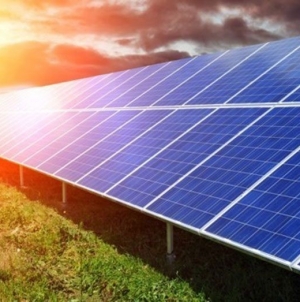Commercial fishermen will lose access to some far out fishing areas due to Payara project
Petroleum supermajor, ExxonMobil, has a big project coming up in 2024, and it has said in the Environmental and Social Impact Assessment (ESIA) that the operations will cause commercial fishing vessels to lose access to some far out fishing areas that are currently available to them. Those areas are around the Project Development Area (PDA). However, the company said that it has assessed the significance of the potential impact on commercial fishing livelihoods to be negligible.
Payara is the third intended development in the Stabroek block for ExxonMobil’s local subsidiary, Esso Exploration and Production Guyana Limited (EEPGL). It is scheduled to begin production in 2024, with as much as 220,000 barrels of oil coming up per day.
ExxonMobil said that the impact of its operations on the lives of commercial fisherfolk will be negligible because the development area will have a small footprint. It said that there are a small number of commercial operators participating in deep-sea fishing, and that it will be able to provide information in advance about its operations and marine safety exclusion zones.
The company said that the marine vessel trips that will be generated throughout the life of the project will potentially impact the commercial fishing activity that occurs as far out as the development area, as well as commercial and subsistence fishing activity within a portion of the area of influence connecting the development area to the Georgetown harbour.
There may also be potential impacts on the livelihoods of nearshore artisanal fisherfolk as well as industrial fishing vessel operators in remote offshore areas as a result of Exxon’s navigation impacts. The oil major said that the highest potential for interactions of the project with fisherfolk may be encounters between small artisanal fishers in the areas where oil support vessels transit between the development area and the shorebases in Georgetown, resulting in limited and temporary disruption to fishing activity.
The company admitted that small artisanal fishers fishing along the coast have a limited ability to adapt to potential disruption to their subsistence fishing activity. This is compounded by the fact that many do not carry radios, use remote ports and/or may not receive notices of increased vessel activity, the company said. Yet, it determined that “the significance of this potential residual adverse impact on artisanal fishing livelihoods” is minor.
The company, despite all of these potential impacts, determined the overall effect of the project to be positive: “Overall, the potential impacts on employment and livelihoods that will result from Project employment, procurement, and worker spending are considered to be positive.”
The Irfaan Ali administration announced its approval of the Payara project on the last day of September. Before its approval, two major environmental issues were frequently discussed in the press. One of those which could potentially impact marine ecosystems is the dumping of produced water. Exxon is already dumping thousands of barrels of produced water at its Liza Phase One operations.
Exxon says that the water will be treated and discharged in line with international standards. The company’s country manager, Alistair Routledge, had claimed that the dumping had no adverse impact. However, that judgement could not be conclusive, as no study has been done on the effect of the produced water on the ocean.
Former Head of the Environmental Protection Agency (EPA), Dr. Vincent Adams, said that the produced water has all sorts of minerals in it, which are unknown until it is actually properly studied, and that it is also very hot, which increases the temperature of the water near the oil vessel by about 38 degrees centigrade.
“So you can’t tell me that’s not gonna impact the environment,” Dr. Adams had told Kaieteur Radio.
The Government has charged ExxonMobil to conduct a study early in the new year, to determine the impact of the produced water on the environment.
The Payara impact assessment states that the volume of produced water to be dumped in the ocean would be less than or equal to 300,000 barrels per day. That is the same amount listed in the Liza Phase Two project, which is scheduled for first oil in 2022, and three times the amount for the Liza Phase One project which is currently producing. By 2024, the three projects will be dumping less than or equal to 700,000 barrels of hot, toxic produced water in the ocean every day.
This is not the only substance Exxon will be dumping in the ocean. According to the Payara impact assessment, ExxonMobil would be dumping as many as 1.6 million barrels of cooling water, 265,000 barrels of sulfate removal and potable water processing brines, and 360 barrels of domestic and sanitary wastewater into the ocean, every day. It will also be dumping as many as 1.2 million barrels of ballast water into the ocean at each tanker loading.
Overall, the company determined that the overall effect of these discharges on marine geology to be negligible. It also determined that the magnitude of potential impact on fish to be negligible to small, and the residual impact to some species to be minor.






















